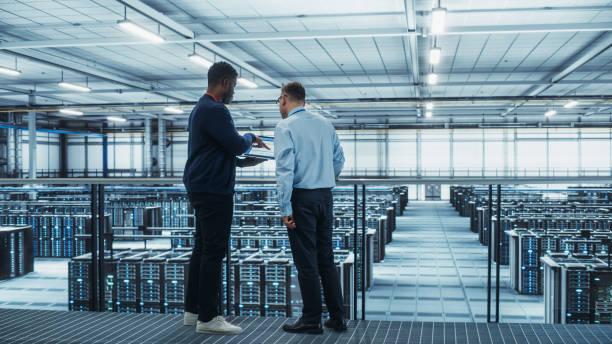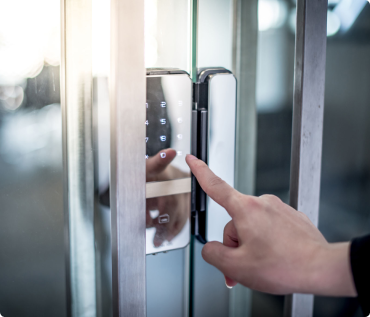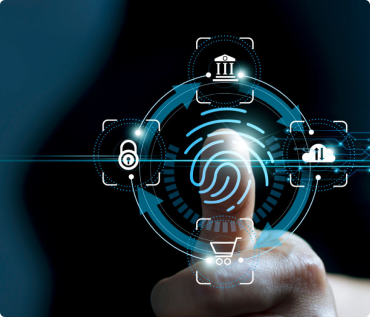Schools and similar institutions must protect employee and
student track records, private data, and other critical information required
for business operations. If not properly monitored, the Institution may face
data and financial loss, jeopardizing its credibility and reputation. However,
these scenarios can be avoided with a dependable monitoring system.
The Server Room Monitoring System can provide an alert
status of a disaster that threatens availability and uptime. A monitoring
system is required in a complex server environment and can be helpful even in a
small server room of a school or institution.
Advantages and Benefits of Real-Time Server Monitoring
Saving money and time is always an advantage, but what is
the working of a server monitoring service? The support systems
effectively assess and prevent problems, and when issues do arise, they are
handled without human intervention. Live event notifications can also be sent
via several different contact methods, such as SMS, email, or custom
scripts, allowing adjustments to be made strictly as they are required.
A real-time picture of utilization and metrics can be
seen live, at any time, thanks to impressive data tracking. These services were
previously available, but only through expensive, standalone systems that were
difficult to scale or apply to virtualization. Server monitoring services are a
low-cost and effective solution.
What kind of assistance do server monitoring services
provide?
Although there are many other ways to provide
full-time server support, only server monitoring offers all essential support
functions through a single system. Whereas in the past, a human was required to
collect this information and then decide and act accordingly, support systems
now operate primarily autonomously, often according to a rule-based system,
eliminating the need for additional staff or unnecessary delays in
decision-making. So, what exactly are the advantages of real-time server
monitoring? Let us investigate.
Identifying server faults and notifying administrators
One of the significant time-saving advantages of real-time
server monitoring is detecting server problems and notifying server
administrators before affecting users. These real-time warnings enable
administrators to keep servers operational 100 percent of the time, with no
pauses in functioning, for enterprises that require unwavering dependability.
Servers are frequently the backbone of critical systems
that must be impenetrably reliable, such as medical care facilities, law
enforcement agencies, and fire departments. When a server's stability can mean
the difference between life and death, real-time server monitoring provides
server administrators with peace of mind and more comprehensive control over
their servers.
The centralized perspective of infrastructure
Keeping track of every active server component can be
tricky for server administrators. This duty can be daunting for server
administrators in large firms with significant server architecture, resulting
in potentially catastrophic oversights. One of the advantages of real-time
server monitoring is that it allows administrators to keep track of all server
components from one location.
Real-time server monitoring successfully puts the server
administrator in a position to see and address any tasks linked to the server's
functionality and upkeep. Although physical intervention is required for
hardware failure jobs, practically all software-related functions can be
centralized by utilizing virtual server monitoring.
Checking for potential vulnerabilities using dependency
maps across systems
The ability to map dependencies is another essential
feature of real-time server monitoring to detect and repair problems before
they become critical and jeopardize system dependability and reliability.
This can help detect system bottlenecks, increase trustworthiness, and reduce
any unnecessary processes or components, depending on the type of server
infrastructure being monitored.
Real-time server monitoring can significantly impact the
number of resources required when optimizing server infrastructure,
ultimately enhancing reliability and cutting operating costs. Real-time server
monitoring can save you a lot of time and processing resources, even if it
isn't immediately evident.
Trending and capacity planning tools
Among the many appealing features of real-time monitoring
are several trending and capacity planning tools that can aid in the
optimization of existing infrastructure and the gathering of data on how to
develop it best. While a skilled server administrator can obtain this
information manually, real-time server monitoring makes it easier for admins to
gather it quickly, efficiently, and comprehensively.
Gathering and evaluating this data can be difficult even
for the most experienced server admins. Real-time server monitoring can assist
server administrators, regardless of skill level or experience, in gathering
and evaluating system resource utilization and, as a result, deciding how to
effectively utilize these resources. This, like the previously mentioned
advantages, will aid in improving reliability and efficiency.
Event handlers are used to restart failed services
automatically.
Finally, real-time server monitoring can detect and repair
problems caused by failed services, resulting in increased reliability and
efficiency. Failed services can significantly impact a company's server
architecture, even knocking entire networks offline under challenging situations.
Event handlers aid in the prevention of server failure by allowing
administrators to stay on top of any unexpected events.
While many server administrators do an excellent job
of keeping their servers up and running, even the most talented and dedicated
administrators need to sleep, eat, and engage in leisure activities. Even if
shift-based administrators control your server, it's common for failing
services to go unreported, causing reliability concerns and lowering overall
efficiency. Without the direct supervision of a server administrator, these
hurdles to optimal productivity can be rapidly and effectively addressed using
real-time server monitoring services.
Advantages of Environmental Monitoring
Temperature and other environmental factors in a server
room or data center can be monitored in various ways. Server room
Temperature sensors in several critical infrastructure systems can notice
rising temperatures inside their cabinets or accessories. A good example is UPS
systems and associated battery sets. Cabinet power distribution units can also
be equipped with temperature probes (PDUs). While these systems provide helpful
information, they are independent systems that do not provide a complete
picture of the server room and serve racks and their environmental profile.
This can be accomplished with the help of a dedicated
server room environmental monitoring system, which
can:
● Avoid System Downtime: While most
electrical devices can operate at temperatures up to 40 degrees Celsius without
degrading, at
temperatures above 25 degrees Celsius, internal cooling fans must work harder
to blow air over their circuits and heatsinks. Long-term reliability decreases,
resulting in sporadic failures and, ultimately unavailability. Knowing when a
server room temperature or server rack temperature rises allows the action to
be taken, such as reconfiguring the server room, replacing gear, or adding more
cooling.
● Lower Operating Costs: Cooling
comes at a price. The more electricity is utilized to deliver the desired
amount of cooling, the greater the kW demand on an air conditioning
system. Maintaining a consistent humidity and temperature level allows
stabilizing demand on local air conditioning systems, making them better
optimized for airflow and cooling efficiency. Heat damage to local UPS
batteries can also be avoided in a temperature-controlled environment, which
must be kept between 20 - 25 degrees Celsius. While cooling fans have a long
mean time between failures (MTBF) of around 70,000 hours, using them at high
speeds can cause more significant wear and tear and long-term loss.
● Employee Comfort: Ensuring that
any visitor or employee to the server room facility can operate
comfortably for health and safety and personnel wellness is critical server
room temperature should be between 20 and 21 degrees Celsius, with broad
guidelines ranging from 10 to 28 degrees Celsius.
Summary
As the complexity of computing facilities has grown,
organizations have started to depend on their environmental monitoring system
to assure availability and uptime. Industry and regulatory compliance and the
need to meet insurance policy criteria have been factors in its installation.
Whether the server facility is on-premise, part of a hybrid-cloud facility, or
remote, the benefits are the same as in an Edge Computing or small data center.
Server room temperature and humidity levels are monitored to keep servers
functioning, save energy, and allow adequate time to respond to a potentially
catastrophic system fault or failure.




